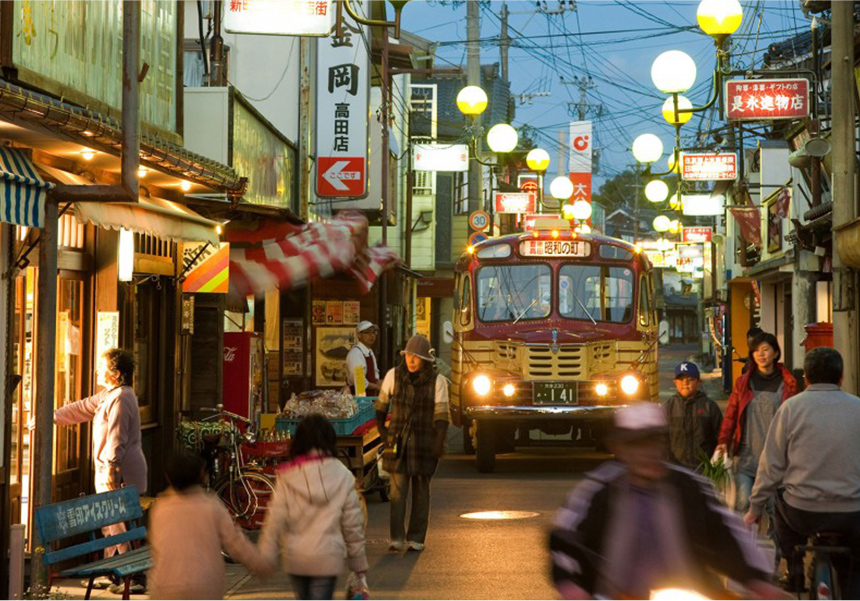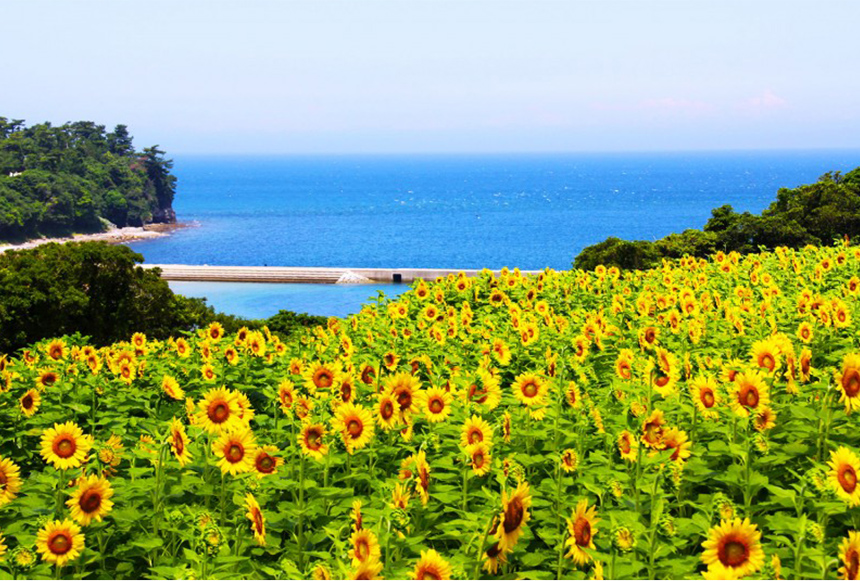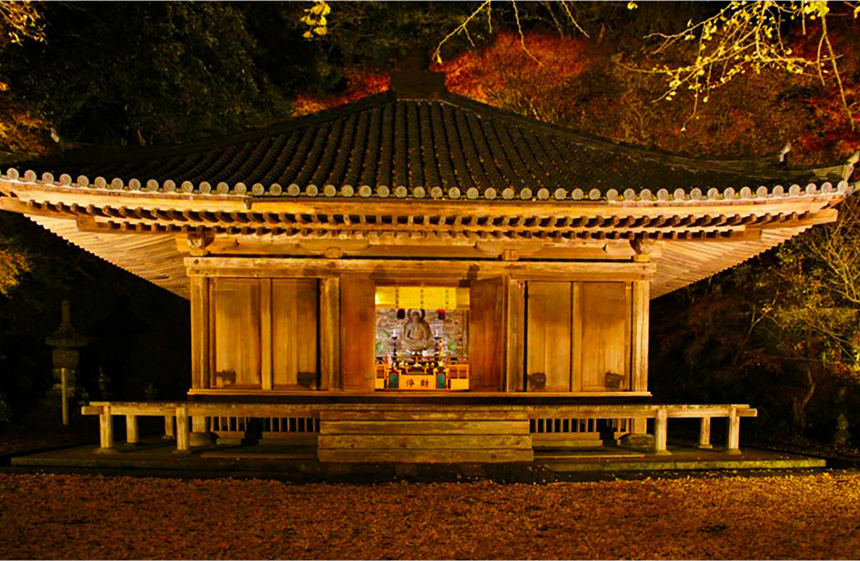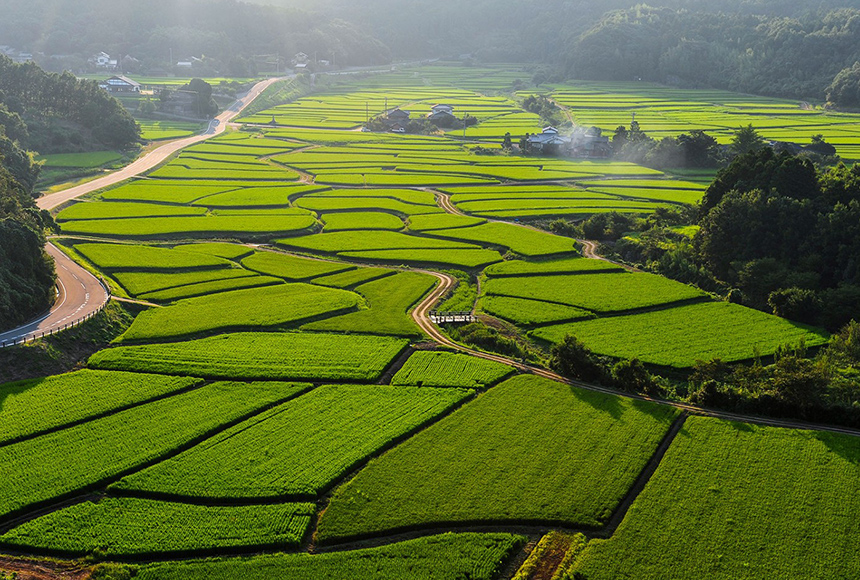Tourism to Kunisaki Peninsula
Bungo-Takada: Showa-no-machi & Platinum Street

The Showa-no-machi quarter in Bungo-Takada, a small city settled into the north-west shoulder of the Kunisaki Peninsula, seems to have been stopped in a retro time warp centred on the 1950s. A time when Japan was well on the way to recovery after the devastation of the Second World War, Showa-no-machi’s ma and pa and brick-a-brack shops not only has nostalgic appeal to older Japanese but has a warmth of feeling that any visitor can enjoy.
So authentic is Showa-no-Machi that it is used as a set for period films and TV dramas. For more of the same but in a lower key, stroll through the streets behind Showa-no-machi and cross the bridge over the Katsura River to Platinum Street.
Nagasakibana Resort & Camping Ground

On the north side of Kunisaki betwixt Matama Sunset Café and Imi lies Nagasakibana, a long, finger-like peninsula jutting out into the Seto Inland Sea. Here the locals first took revival into their own hands turning fallow and overgrown fields into attractive flower meadows that subsequently spawned a boutique, organically-grown edible rapeseed and sunflower oil industry. The 2013 Kunisaki Art Project added to their sterling efforts bringing Yoko Ono’s 13 stone “Invisible Benches” and Choi Jeonghwa’s “Iro Iro Iro” raised wooden viewing platform. Since then, more artwork has joined the collection including work by two of Japan’s top artists Toda Yuusuke, Fujisawa Sadami, Mori Takaya and Fujimoto Yukio.
The Peninsula has wonderful views over the Seto Inland Sea to Honshu, and a delightful sandy beach overlooked by a homely Italian restaurant, where local gifts including the oil are sold. Explore the peninsula of foot and you will not only come across Nagasakibana’s artwork but also a magical cove, where a stone Buddha has been venerated by the locals for centuries. Charming small cabins are also available for holiday lets. Some of these are decorated on the outside by the whimsically intriguing artwork by Fujisawa Sadami.
Rokugo-Manzan Light Up Celebration

The 1,300 year anniversary of Rokugo-Manzan, the esoteric religious group combining Buddhist, Shinto and folk beliefs, is celebrated in autumn 2018 with son et lumière shows at Usa Jingu and shrines and temples throughout the Kunisaki Peninsula. Events begin at Choan-ji and then held in turn at Tennen-ji, Usa Jingu, Reisen-ji, Futago-ji, Senpuku-ji, Monjusen-ji, Fuki-ji, Kumano-Magaibutsu, Yahata-gu and Ganjoju-ji.
Rokugo-Manzan Light Up is held from 28th October to 9th December each weekend and on public holidays.
Tashibu-no-Sho

Tashibu-no-sho, a charming district with some of the most picturesque countryside found anywhere in Japan, was once under the direct control of Usa Jingu. Although the shrine’s dominance waned more than 800 years ago as the samurai began their rise to prominence, the patchwork of unevenly shaped paddy fields found still found here has remained the same in part since these early days. Here and there small clusters of farmhouses, often centred on a small temple, dot the landscape, which is surrounded by the distinctive, rugged cliffs of Kunisaki.
Trails lead up through bamboo groves and forests to the top of these precipices. Here, protected from the elements in shallow depressions in the rock face, statues of Asahi and Yuhi, literally sunrise and sunset, Kannon Bodhisattvas cast their protective gaze east and west across the scenery below. Beautiful at any time of the year, the vista is spectacular in early summer when the paddies are flooded and reflecting the setting sun.




